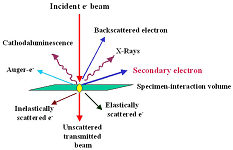
Asia Pacific Academy of Science Pte. Ltd. (APACSCI) specializes in international journal publishing. APACSCI adopts the open access publishing model and provides an important communication bridge for academic groups whose interest fields include engineering, technology, medicine, computer, mathematics, agriculture and forestry, and environment.

Comparing the use of High Performance Liquid Chromatography (HPLC) and Spectrophotometry to measure the amount of chitosan in water-soluble fertilizers
Vol 3, Issue 1, 2022
Download PDF
Abstract
Several analytical techniques, including High Performance Liquid Chromatography (HPLC) and Spectrophotometry, were developed to quantify the chitosan content in water-soluble fertilizers, with a focus on optimizing the hydrolysis conditions for chitosan. The results showed that the optimal hydrolysis was found to occur using a 1+1 hydrochloric acid solution at 100°C for 24 hours. For HPLC, using 1-phenyl-3-methyl-5-pyrazolone (PMP) as the derivatizing agent, the method exhibited a linear range of 1-200 mg/L, a detection limit of 0.07 mg/L, and a spiked recovery rate of 95%-101%. Spectrophotometry, on the other hand, had a linear range of 0-100 μg, a detection limit of 0.47 μg, and a recovery rate of 94%. The two methods demonstrated good agreement in their determination of chitosan content in water-soluble fertilizer samples, satisfying the analytical requirements for chitosan in such fertilizers. HPLC proved to be more efficient with fewer interference factors. Additionally, the use of methyl fluorene chloroformate (FMOC-Cl) as a derivatizing agent for chitosan hydrolysate, followed by detection with HPLC, yielded results that were essentially consistent with the previous two methods. However, the HPLC and spectrophotometry methods established in this study were not suitable for determining chitosan content in water-soluble fertilizers that contain nitrates.
Keywords
References
- Jiang T. Chitosan. Beijing: Chemical Industry Press; 2001.
- Huang L. Construction of chitosan micro/nano functional materials and their biomedical applications. Wuhan: Huazhong University of science and technology; 2019.
- Kumar MNVR. A review of chitin and chitosan applications. Reactive and Functional Polymers. 2000; 46(1): 1- 27.
- SC/T 3403-2018. Chitin. Chitosan (Chinese). Agriculture and Rural Ministry; 2018.
- Cord-Landwehr S, Ihmor P, Niehues A, et al. Quantitative Mass-Spectrometric Sequencing of Chitosan Oligomers Revealing Cleavage Sites of Chitosan Hydrolases. Analytical Chemistry. 2017; 89(5): 2893-2900. doi: 10.1021/acs.analchem.6b04183
- Cheung R, Ng T, Wong J, et al. Chitosan: An Update on Potential Biomedical and Pharmaceutical Applications. Marine Drugs. 2015; 13(8): 5156-5186. doi: 10.3390/md13085156
- Zou P, Yang X, Wang J, et al. Advances in characterisation and biological activities of chitosan and chitosan oligosaccharides. Food Chemistry. 2016; 190: 1174-1181. doi: 10.1016/j.foodchem.2015.06.076
- Naqvi S, Moerschbacher BM. The cell factory approach toward biotechnological production of high-value chitosan oligomers and their derivatives: an update. Critical Reviews in Biotechnology. 2015; 37(1): 11-25. doi: 10.3109/07388551.2015.1104289
- Hosseini SF, Rezaei M, Zandi M, et al. Fabrication of bio-nanocomposite films based on fish gelatin reinforced with chitosan nanoparticles. Food Hydrocolloids. 2015; 44: 172-182. doi: 10.1016/j.foodhyd.2014.09.004
- Cui H, Yuan L, Lin L. Novel chitosan film embedded with liposome-encapsulated phage for biocontrol of Escherichia coli O157: H7 in beef. Carbohydrate Polymers. 2017; 177: 156-164. doi: 10.1016/j.carbpol.2017.08.137
- Olivera S, Muralidhara HB, Venkatesh K, et al. Y. Potential applications of cellulose and chitosan nanoparticles/composites in wastewater treatment: A review. Carbohydrate Polymers. 2016; 153: 600-618. doi: 10.1016/j.carbpol.2016.08.017
- Yang R, Li H, Huang M, et al. A review on chitosan-based flocculants and their applications in water treatment. Water Research. 2016; 95: 59-89. doi: 10.1016/j.watres.2016.02.068
- Kashyap PL, Xiang X, Heiden P. Chitosan nanoparticle based delivery systems for sustainable agriculture. International Journal of Biological Macromolecules. 2015; 77: 36-51. doi: 10.1016/j.ijbiomac.2015.02.039
- Sui X, Zhou Z, Zhang W, et al. Effects of chitosan coating on seed germination, seedling growth and several physiological and biochemical indexes of rape. Plant physiology bulletin. 2002; 38(3): 225-227.
- Wang C, Xu Z. Effect of Chitosan on nodulation and nitrogen fixation of vegetable soybean under nacl stress. Journal of plant nutrition and fertilizer. 2020; 26(1): 185-190.
- Das SN, Madhuprakash J, Sarma PVSRN, et al. Biotechnological approaches for field applications of chitooligosaccharides (COS) to induce innate immunity in plants. Critical Reviews in Biotechnology. 2013; 35(1): 29-43. doi: 10.3109/07388551.2013.798255
- Synowiecki J, Al-Khateeb NA. Production, Properties, and Some New Applications of Chitin and Its Derivatives. Critical Reviews in Food Science and Nutrition. 2003; 43(2): 145-171. doi: 10.1080/10408690390826473
- Ngo DH, Vo TS, Ngo DN, et al. Biological effects of chitosan and its derivatives. Food Hydrocolloids. 2015; 51: 200-216. doi: 10.1016/j.foodhyd.2015.05.023
- Chen S, Jiang Y, Ba C, et al. Characteristics and spectral characteristics of biodegradable polyvinyl alcohol coating materials. China soil and fertilizer. 2017; (4): 154-160.
- Jiao M, Zhou P, Sun Q, et al. Effects of different modified biochar and application rates on the aggregates of aeolian sandy soil and forage yield. China soil and fertilizer. 2020; (6): 34-40.
- Wang X, Guo S, Lin J, et al. The principle of producing fertilizer with chitosan. Technology and its application in agriculture. Shandong Agricultural Science. 2008; (8): 75-80.
- Liu J, Li T, Tan X, et al. Effect of chitosan soluble fertilizer on Watermelon Growth and yield. China soil and fertilizer. 2014; (6): 81-85.
- Yan X, Evenocheck HM. Chitosan analysis using acid hydrolysis and HPLC/UV. Carbohydrate Polymers. 2012; 87(2): 1774-1778. doi: 10.1016/j.carbpol.2011.09.091
- Li B, Zhang J, Bu F, et al. Determination of chitosan with a modified acid hydrolysis and HPLC method. Carbohydrate Research. 2013; 366: 50-54. doi: 10.1016/j.carres.2012.11.005
- Han Z, Zeng Y, Lu H, et al. Determination of the degree of acetylation and the distribution of acetyl groups in chitosan by HPLC analysis of nitrous acid degraded and PMP labeled products. Carbohydrate Research. 2015; 413: 75-84. doi: 10.1016/j.carres.2015.03.002
- Zhu X, Xia W. Determination of purity of chitin by high performance liquid chromatography. Journal of analysis and testing. 2003; 22(4): 9-13.
- Han S, Li D, Chen J, et al. Spectrophotometric Determination of chitosan content in fertilizers. China soil and fertilizer. 2009; (2): 71-73.
- Prochazkova S, Vårum KM, Østgaard K. Quantitative determination of chitosans by ninhydrin. Carbohydrate Polymers. 1999; 38(2): 115-122.
- Fu X, Huang L, Zhai M, et al. Analysis of natural carbohydrate biopolymer-high molecular chitosan and carboxymethyl chitosan by capillary zone electrophoresis. Carbohydrate Polymers. 2007; 68(3): 511-516. doi: 10.1016/j.carbpol.2006.11.001
- Wu C, Kao CY, Tseng SY, et al. Determination of the degree of deacetylation of chitosan by capillary zone electrophoresis. Carbohydrate Polymers. 2014; 111: 236-244. doi: 10.1016/j.carbpol.2014.04.086
- Tang B. Determination of chitosan content by infrared spectroscopy. Chemical research. 2013 24 (2): 115-117.
- Kasaai M. A review of several reported procedures to determine the degree of N-acetylation for chitin and chitosan using infrared spectroscopy. Carbohydrate Polymers. 2008; 71(4): 497-508. doi: 10.1016/j.carbpol.2007.07.009
- Yan N, Wan XF, Chai XS. Rapid determination of degree of deacetylation of chitosan by a headspace analysis based Titrimetric technique. Polymer Testing. 2019; 76: 340-343. doi: 10.1016/j.polymertesting.2019.03.034
- Ma C, Zhang W, Su Z, et al. Resonance Rayleigh scattering method for the determination of chitosan using erythrosine B as a probe and PVA as sensitization. Food Chemistry. 2018; 239: 126-131. doi: 10.1016/j.foodchem.2017.06.012
- GB/T 5009.1-2003. General principles of physical and chemical part of food hygiene inspection methods (Chinese). Ministry of Health of the People's Republic of China and the China National Standardization Administration.; 2003.
- Zhu X, Cai J, Yang J, et al. Determination of glucosamine in impure chitin samples by high-performance liquid chromatography. Carbohydrate Research. 2005; 340(10): 1732-1738. doi: 10.1016/j.carres.2005.01.045
Supporting Agencies
Copyright (c) 2022 Junming Huang, Xiaona Hou, Mi Liu, Yansong Han, Wankui Bao, Xu Wang, Hongfang Liu

This work is licensed under a Creative Commons Attribution 4.0 International License.

This site is licensed under a Creative Commons Attribution 4.0 International License (CC BY 4.0).
1.jpg)
Prof. Sivanesan Subramanian
Anna University, India





.jpg)
